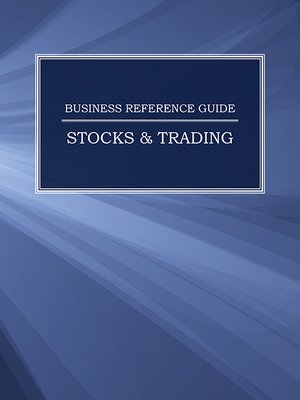
Sign up to save your library
With an OverDrive account, you can save your favorite libraries for at-a-glance information about availability. Find out more about OverDrive accounts.
Find this title in Libby, the library reading app by OverDrive.



Search for a digital library with this title
Title found at these libraries:
| Library Name | Distance |
|---|---|
| Loading... |
This volume begins with an essay explores the fundamental concepts of a stock market and its role in helping corporations
raise adequate finances for expansion. When corporations first enter the market and sell shares to the public,
they do an initial public offering, or IPO. These shares are later traded on a secondary market. This essay also analyzes
how the stock market evolved alongside the advent of improved technology. Nancy Devenger follows by detailing the
complexities of the market and discusses the Stock Market Crash and the subsequent regulatory action. Comprised of
stocks listed on the stock market are stock indexes. As noted by Carolyn Sprague, some of the broad-based indexes,
such as the Dow Jones Industrial Average and the S&P 500, serve as performance indicators for the whole United
States market. Specialized indexes also exist which allow investors to track the performance of a group of stocks with
common attributes, such as the type of company or size of company. Depending on how much investors are willing
to pay for stocks or bonds, their value may change. Heather Wall Beckham discusses the underlying concepts of each
type of security before Heather Newton examines the two types of stock: common and preferred. Each option for stock
has a variety of stock holder rights and play different roles in influencing the decisions of a corporation’s board of
directors. Additionally, both forms of stock typically allow shareholders to receive dividends. Corporations, however,
do not always have to pay out dividends to their investors. Michael Erbschloe examines the reasoning behind this and
also discusses new laws and regulations that seek to prevent companies from releasing false or misleading financial
reports.







